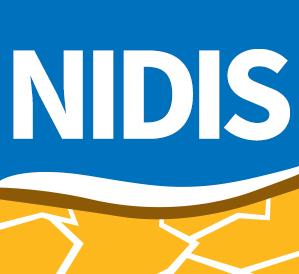For the latest forecasts and critical weather information, visit weather.gov.
Funding Opportunities
NIDIS and its partners offer a variety of funding opportunities related to drought early warning research across many sectors and fields, including science, education, and technology.
Competitive Funding Opportunities
These featured competitive funding opportunities support advancing drought early warning across a variety of sectors and are offered by NIDIS and partnering agencies and organizations.
Coping with Drought Research Competition
NOAA's National Integrated Drought Information System (NIDIS) announced up to $4 million in funding for 8 two-year projects as part of the Fiscal Year 2025 NIDIS Coping with Drought: Understanding and Assessing Drought in a Changing Climate competition.
This competition seeks projects focused on improving drought indicator performance to account for non-stationarity with the goal of more accurate drought assessments that support communities in preparing for, mitigating, and responding to drought.
For more information, visit the NIDIS Coping with Drought web page.
This application period closed on December 9, 2024. Awardees will be announced in 2025.
Modeling, Analysis, Predictions, and Projections (MAPP) Grant Competition
NOAA's Modeling, Analysis, Predictions, and Projections (MAPP) Program hosts annual funding competitions soliciting proposals on climate-related topics. NIDIS supports drought-focused funding competitions through MAPP, focusing on improving drought monitoring and prediction systems.
In June 2024, NIDIS and MAPP announced $4.9 million in funding for seven new 3-year projects as part of the FY 2023 NIDIS/MAPP competition: Science for the 21st-Century Western Hydroclimate. These projects focus on the critical state of the western hydroclimate and advancing our understanding and capabilities to address the challenges posed by variability and change in that hydroclimate.
View research profiles for each of the NIDIS/MAPP awardees.
Tribal Climate Resilience Annual Awards Program
The Bureau of Indian Affairs' Branch of Tribal Climate Resilience (TCR) provides financial support for federally-recognized Tribal Nations and authorized Tribal organizations through a competitive funding opportunity to support Tribal cliamte resiliency. On July 9, 2024, the Department of the Interior announced the Fiscal Year 2024 BIA TCR Annual Awards Program investment in Tribal communities. TCR will make available approximately $120 million in funding for Tribes and tribal organizations to build climate resilience capacity.
The application period closed on October 18, 2024.
WaterSMART Drought Response Program
The American West faces serious water challenges. Widespread drought, increased populations, aging infrastructure, and environmental requirements all strain existing water and hydropower resources. Adequate and safe water supplies are fundamental to the health, economy, and security of the country.
Through the WaterSMART Drought Response Program, the U.S. Bureau of Reclamation provides funding for collaborative drought planning efforts, decision support tools, and the construction of infrastructure projects to mitigate impacts of drought.
- Bureau of Reclamation | Native American Affairs Program Technical Assistance
- FEMA | Hazard Mitigation Grant Program
- FEMA | Flood Mitigation Assistance (FMA) Grant Program
- FEMA | Safeguarding Tomorrow Revolving Loan Fund Program
- USDA National Institute of Food and Agriculture | Rapid Response to Extreme Weather Events Across Food and Agriculture Systems
- U.S. Forest Service | Citizen Science Competitive Funding Program
- EPA | Clean Water State Revolving Fund
- EPA | Water Infrastructure and Resiliency Finance Center
- NOAA Office of Coastal Management | Climate Resilience Regional Challenge
Featured FY 2022 Coping with Drought Research
Since 2012, NIDIS has funded more than 120 grants for research projects advancing drought early warning across a variety of sectors through the Coping with Drought research competition and the Modeling, Analysis, Predictions, and Projections (MAPP) Program's funding competitions, in addition to supporting other drought research across sectors and regions. Below are examples of research NIDIS is currently supporting through the FY 2022 Coping with Drought competition. View all FY 2022 Coping with Drought awardees.

Connecting Ecological Drought Monitoring Tools with Natural Resource Stakeholders in Montana
Montana and surrounding states have experienced two severe drought events during the past five years that were characterized by rapid development during the growing season. In response to the magnitude and diversity of impacts during these droughts, the Montana state government initiated a two-year collaborative process to update the state-level drought response plan. During this project, the research team will develop new ecologically relevant drought monitoring tools and assess the ability of traditional drought indicators to accurately represent ecological drought conditions. Extensive social science tasks will allow the team to contribute valuable information and guidance to the Montana drought advisory committee regarding the timing of management decisions made by natural resource stakeholders, the existing tools and trigger points that are used when making those decisions, and how new ecological drought monitoring tools could be incorporated into their decision-making process.

Chími nukárihihi (Let’s Get Ready): Collaborative Climate Change and Drought Response Monitoring and Implementation
Through this project, the Karuk Tribe aims to improve Karuk socio-ecological resilience to drought by (a) increasing access to drought-relevant data for Karuk Tribal managers and (b) increasing Karuk community engagement in research, monitoring, and management activities to better integrate Indigenous and Western science and management systems and achieve more rapid awareness of and response to drought impacts across the landscape. The project team will build out a drought resilience data portal to enable Karuk natural resources managers to access geospatial data in a user-friendly way. The team will also build on the previous five years of Agroecosystem Climate Assessment and Food Grove plot data collection, which has resulted in baseline data of cultural food, fiber, and medicinal plant focal species that are important for Karuk culture.

Projecting Socio-Ecological Impacts of Drought in Southwestern Ecosystems to Prioritize Restoration Initiatives
The Southwest U.S. is experiencing more frequent and severe droughts, leading to unprecedented die-offs of foundational plant species across ecosystems. For Native American tribes, the loss or movement of plants used for food, ceremonies, medicine, or art imperils cultural practices and traditional life ways tied to those species.
This project will combine information on social connections to natural areas with ecological data, to identify ecocultural hotspots that are vulnerable to drought. Using this information, the team will identify priority sites for restoration treatments that mitigate ecocultural losses.

Building a More Drought-Resilient Urban Forest Ecosystem
The goal of this project is to strengthen drought and climate resilience in urban forests by extending existing drought monitoring and early warning systems to urban settings. The project team will leverage strong existing collaborations among scientists, practitioners, and decision-makers in the Chicago region and analyze historical and new real-time data streams to improve our understanding of drought impacts on urban trees and forests. This project will produce science-based, multi-tiered action strategies for improving drought resilience in the near term and future climate adaptation using methods and frameworks that will be extensible to other cities.

